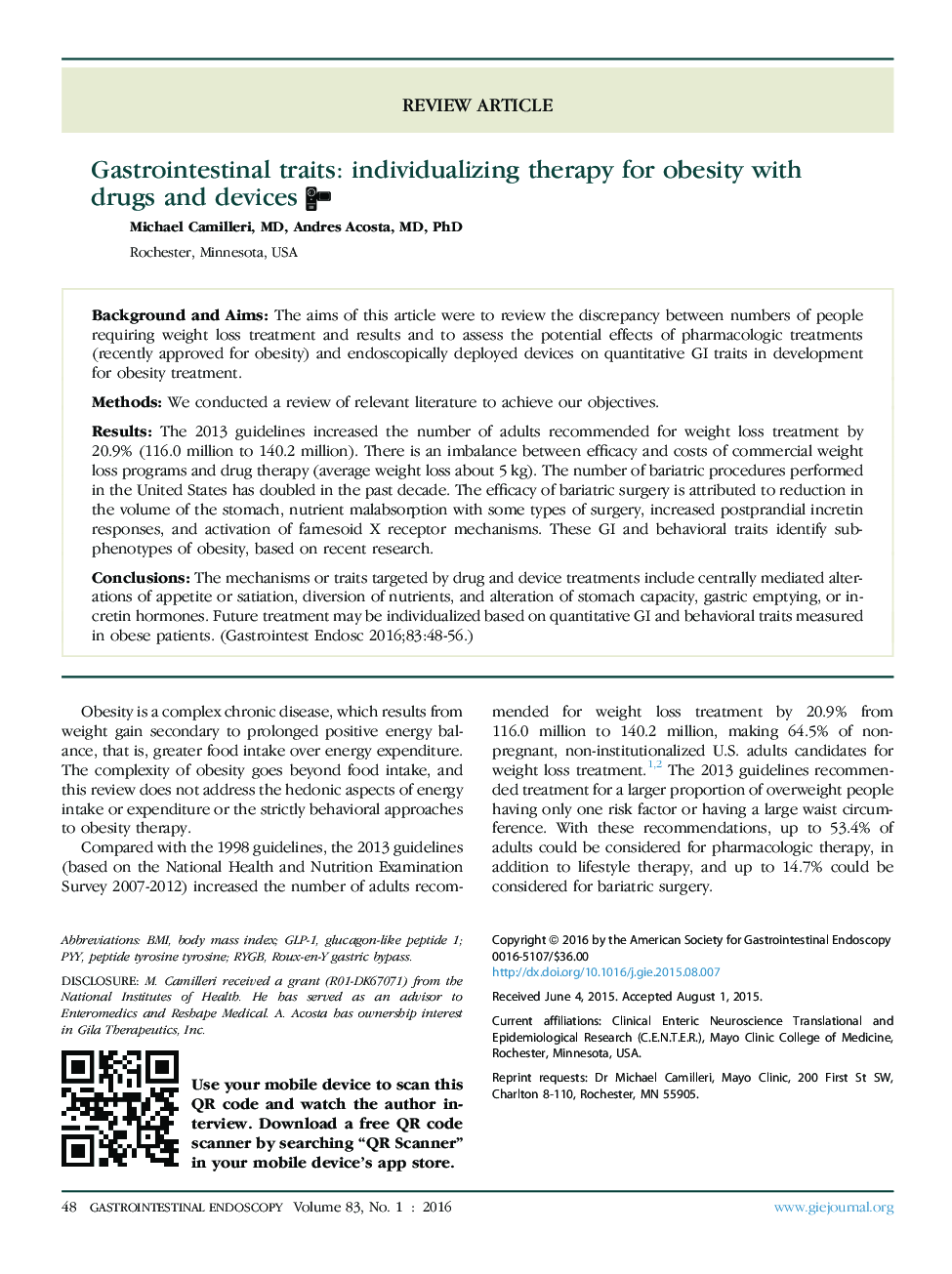| کد مقاله | کد نشریه | سال انتشار | مقاله انگلیسی | نسخه تمام متن |
|---|---|---|---|---|
| 6097221 | 1210283 | 2016 | 9 صفحه PDF | دانلود رایگان |
Background and AimsThe aims of this article were to review the discrepancy between numbers of people requiring weight loss treatment and results and to assess the potential effects of pharmacologic treatments (recently approved for obesity) and endoscopically deployed devices on quantitative GI traits in development for obesity treatment.MethodsWe conducted a review of relevant literature to achieve our objectives.ResultsThe 2013 guidelines increased the number of adults recommended for weight loss treatment by 20.9%Â (116.0 million to 140.2 million). There is an imbalance between efficacy and costs of commercial weight loss programs and drug therapy (average weight loss about 5 kg). The number of bariatric procedures performed in the United States has doubled in the past decade. The efficacy of bariatric surgery is attributed to reduction in the volume of the stomach, nutrient malabsorption with some types of surgery, increased postprandial incretin responses, and activation of farnesoid X receptor mechanisms. These GI and behavioral traits identify sub-phenotypes of obesity, based on recent research.ConclusionsThe mechanisms or traits targeted by drug and device treatments include centrally mediated alterations of appetite or satiation, diversion of nutrients, and alteration of stomach capacity, gastric emptying, or incretin hormones. Future treatment may be individualized based on quantitative GI and behavioral traits measured in obese patients.
Journal: Gastrointestinal Endoscopy - Volume 83, Issue 1, January 2016, Pages 48-56
